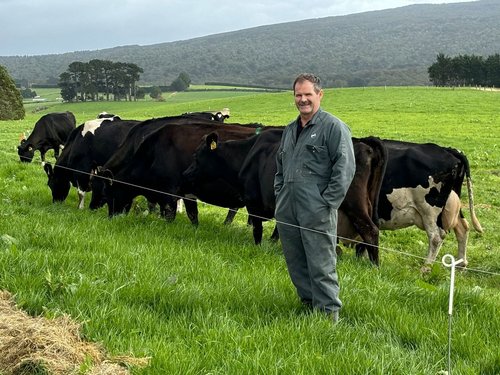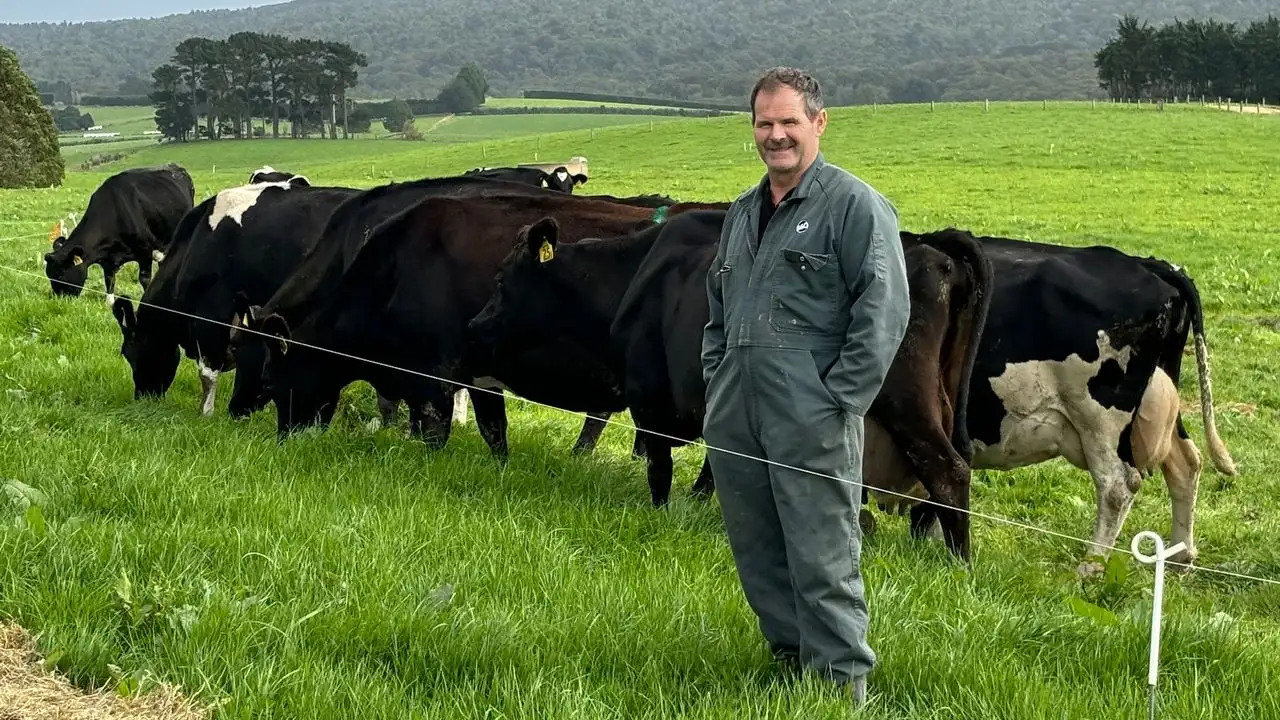“Whammo!” It was like a king hit from behind. No one saw it coming.
Dave Loveridge freely admits that in 2022 procrastination and temptation got the better of him: Testing had identified a bovine viral disease (BVD) persistently infected (PI) calf shortly before the critical mating period.
But Dave couldn’t believe it – a dairy farmer for 28 years, BVD had never been a problem on his farm.
“To look at the calf, you would never know. She was one of the best I had, calf 23, and she was 140kg. You certainly couldn’t pick it by looking at her. She was a beautiful little black calf.
“That’s why I stalled… I was in disbelief that she had it, so I wanted a second test and then there was a 10-day turn-around on that. But one thing led to another, and she was here for one week, two weeks, three weeks, and then I decided I needed to get rid of that calf.
“I never thought any more about it, and got rid of her.”
But by then the damage had been done.
Until that time the calf had been on a stand-off pad behind the shed; next to the area was a race that on-heat cows were passing through after the AB Technician had inseminated them.
“And this year we’ve had 13 PI calves,” Dave says.
“I’ve had to eradicate them immediately. It’s a hard, hard lesson to learn and it just shows how contagious the virus is… that’s what blows me away, all this just from one animal being a PI. That’s another daunting thing – we’ve never had a PI in the milking herd (the farm does Bulk Milk Monitoring for BVD).”
Two years on and the farm is still recovering.

Dave says his production was down 13,000kgMS, mostly due to late calvers from August to September. At an $8 payout that equates to $104,000 in revenue.
Reproduction has taken a big hit: The empty rate was normally between 8-12%, but last season that shot up to 17%. There were 150 more late-calvers than normal.
And out of the 77 empties, 38 were 2- and 3-year-olds (usually the latest and best-BW genetics in a herd).
Dave says the BVD experience had taken away his ability to cull on Johne’s Disease, production, somatic cell count, and late cows. He also had to graze carry-overs for the first time, a practice never previously employed on the farm.
“I’ve had to keep old cows and three-titters. Instead of having 120 replacements we got 84. There was a gut infection that went through them, so we lost 22 calves out of that (BVD makes affected animals susceptible to other illnesses).
“Then we dealt with the phone call to say we had 13 PIs on top of that. So we were down to 58 replacements for the season, half of what it should be. Now I’ve got to buy in 50 replacements next season at $1700, times 50. The cost has been astronomical.”
Results of pregnancy testing from the latest mating season are promising however, with the empty rate returning to normal. This calving season nothing is being left to chance.
Dave’s LIC Agri Manager, Morghan Dawson, says the farm will this year double-punch the calves, meaning a dry punch tissue sample will be taken from the calves shortly after birth to detect the BVD virus as soon as possible, followed by a wet tissue sample for DNA testing at a later date. The dry punch test should ensure any PIs are immediately identified and eradicated, and will therefore help prevent the chances of infected calves being grown to 140kg.
Morghan also believes Dave should upgrade his BVD Monitoring Pack to the BVD Status Pack, which identifies BVD in individuals at every herd test.
Dave also intends to vaccinate the herd ahead of calving and mating, and consideration is being given to double-fencing the boundaries of the farm: “While it’s no guarantee against BVD this will reduce future risk,” Dave says.
“It’s about being proactive. Just because you have a negative bulk milk BVD test doesn’t prevent the calves from being PI when they’re born.
“There’s no way of testing until the calves hit the ground, but that would be the ultimate solution – getting a test done before they’re born.”
However, the BVD antibodies in the herd have significantly increased indicating there was an infection in the young stock.
Cows were exposed to a 2022 PI calf during mating, and this has in-turn led to 13 PI calves this season.





